Resident Evil is one of the best-selling video game franchises of all time. It’s also one of the most consistent: from the 1996 original that gave survival horror its name, to the recent Resident Evil Village, the series has maintained a surprising level of quality. Where the mainline games are concerned, there’s not a single bad entry in the bunch—not even the one you’re thinking of right now.
To celebrate Resident Evil shambling across the 25-year mark, and to prepare for the upcoming release of Resident Evil: Welcome to Raccoon City, I played every mainline game in the series back-to-back. I then used foolproof, indisputable science to rank them from worst to best. This list includes remakes and the remade, as well as the two Revelations titles. Let’s kick things off with the worst Resident Evil game in the main series:
15. Resident Evil 5
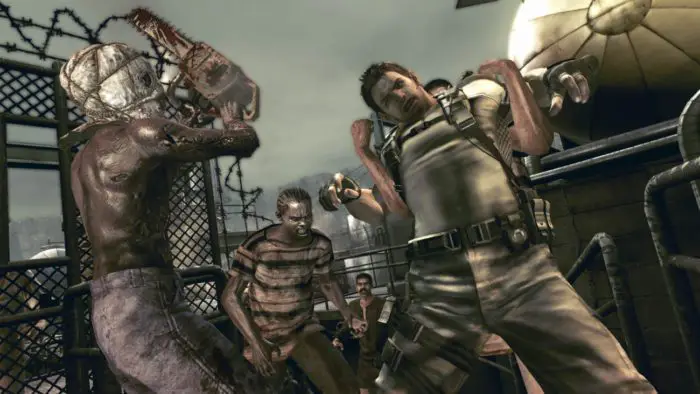
Resident Evil 5 is racist. Its race problem is complicated and probably inadvertent, but that doesn’t make it any less racist. In turning African citizens into bloodthirsty, subhuman monsters, RE5 dabbles in imagery that’s dehumanized Black people for centuries. It comes down to ignorance more than hate: to inform their depiction of Africa, the Japanese developers turned to American media (namely Black Hawk Down, which is racist), picking up stereotypes along the way. The game even dabbles in colorism—just look at the difference in skin tone between the infected Africans and your sidekick Sheva Alomar (who’s introduced with a shot her of butt, by the way).
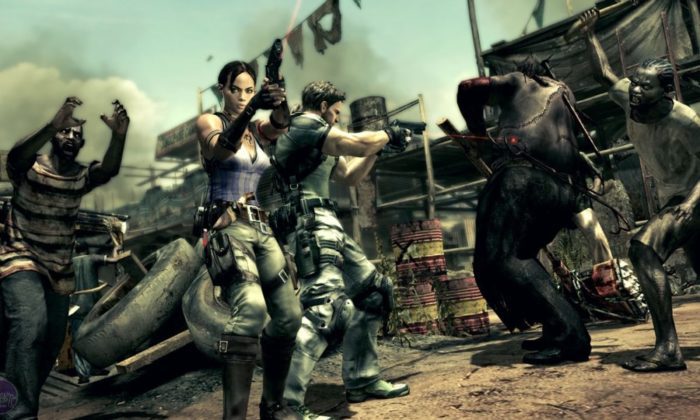
From a political perspective, no game in the franchise has aged worse. From a story perspective, it’s off-the-rails dumb, but there’s a touch of anti-imperial sentiment beneath the surface: bad guy Wesker is a eugenicist now, and the evil corporation’s plan hinges on exploiting Africa for resources. This is still action-era Resident Evil, though, so you also get Chris Redfield punching a boulder into a volcano. The gameplay ranges from clumsy to tense as hell: at its best, RE5 improves on the arena fights of its predecessor; at its worst, it’s pseudo-Gears of War with inferior boss battles. There’s enough going for RE5 to keep it from bad game territory—especially if you’re playing co-op—but it’s still the weakest of the franchise.
14. Resident Evil 6
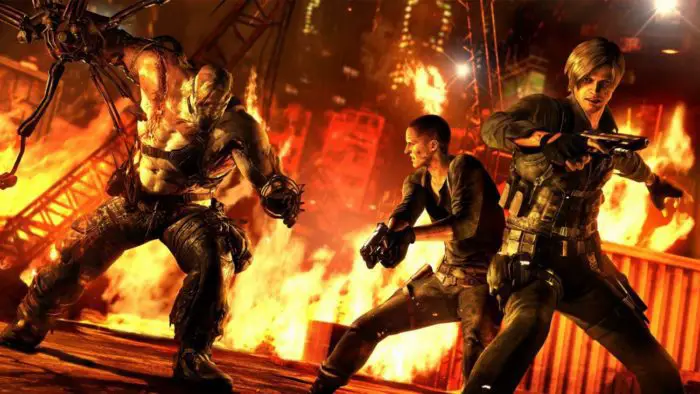
Look, Resident Evil 6 isn’t a good game, but it’s sure an underrated one. If you accept it for what it is—Resident Evil by way of Michael Bay—then it’s only half bad. By the time Wesker’s son jumps a motorcycle over a helicopter, you’ll be numb enough to the game’s ridiculousness for it to become charming. The globe-hopping, seven-protagonist story has a lot of bluster, but it’s peppered with huge-scale silliness and compelling moments. Yes, these moments are Quick Time Events, but life is full of tradeoffs!
Perhaps the strangest thing about RE6 is the fantastic mobility system that the game never tells you how to use. There are a million different ways to dodge and dive around, and the moves are a lot of fun to bust out in combat—but the system never gets a proper introduction or moment of instruction. It’s indicative of RE6 overall: bursting with ideas, but lacking a clear sense of how to fit them together. It pivots between borderline unplayable and gloriously over-the-top at a moment’s notice. Leon’s campaign—the game’s indisputable high point—feels akin to Resident Evil 4 with the action turned up to eleven. RE6 makes you suffer for its rewards, but what rewards they are.
13. Resident Evil 0
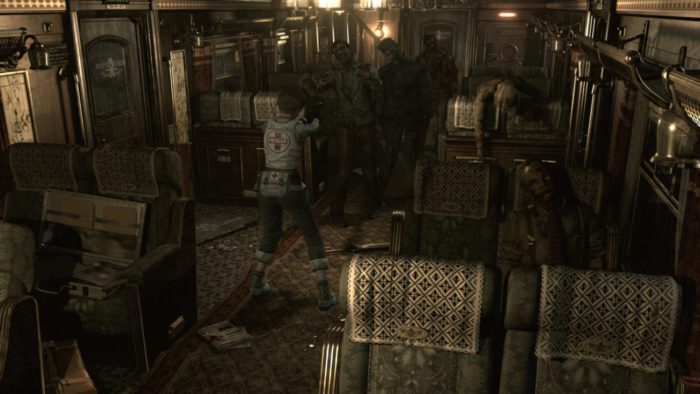
The last of the fixed-camera games, Resident Evil 0 shook up a tried-and-true formula by having you control two characters at once. It also introduced the ability to leave items on the ground, allowing for a little more freedom in inventory management. But in a bizarre case of “give an inch, take a mile” design, the developers removed a far more useful inventory feature: the item box. In the absence of magically accessible storage, RE0 forces you on long treks to retrieve items you didn’t know you’d need later (for the love of God, keep the hookshot with you). Combine that with a fiddly interface for swapping items between characters, and the meat of the gameplay becomes tedious repetitive resource management.
The art and level design are excellent, but the game’s flaws don’t end with its inventory system. A few of the enemies and bosses seem designed to frustrate. Resident Evil’s story jumped the shark in Code: Veronica (more on that soon), but RE0 is the opposite of a course correction: in the opening cutscene, a robed anime villain summons an army of leeches by singing opera on a clifftop. Any attempt to ease into a serious story from there is laughable. Rebecca Chambers is a lovely protagonist, but her inclusion opens up plot holes—you’re telling me she took down a tyrant singlehandedly in RE0, but couldn’t handle a hunter just hours later in Resident Evil?
12. Resident Evil – Code: Veronica
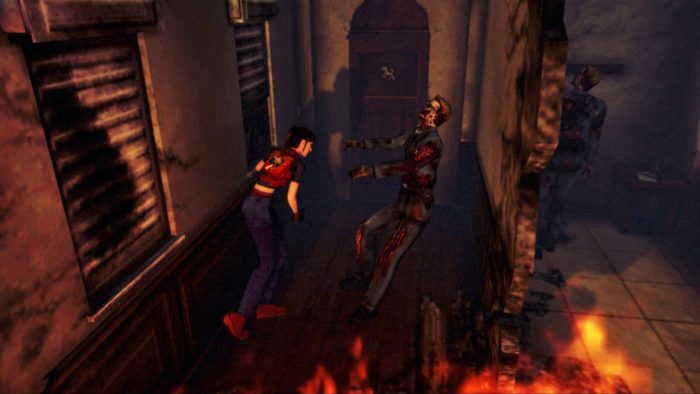
This is where the series’ story jumped the rails. It was campy, B-movie shlock from the start—and amusingly so—but Code: Veronica is preposterous. Wesker comes back from the dead with superpowers, Claire Redfield goes from capable civilian to Trinity in The Matrix, and there’s a Norman Bates-esque villain who crossdresses as his twin sister. To top things off, the game introduces the single most annoying character in the franchise: Steve Burnside, a whiny DiCaprio lookalike with a criminally grating voice. That Claire falls for him (and not heroic hunk Leon Kennedy) is beyond the pale.
RECV sacrifices environmental detail for the transition to true 3D, but the gothic horror art style makes up for it. The puzzles, resource management, and pace of progression are classic Resident Evil. Veronica goes overboard in the difficulty department, however. This was the only game in the series in which I had to reload an old save because it was impossible to move forward. If you do a little searching, you’ll find stories of players who had to restart the entire game after making a few mistakes. There are two segments in particular—a surprise Tyrant fight and an unannounced character switch—that can easily softlock players into a dead end. Code: Veronica is a decent entry with some killer moments, but it’s a bumpy ride.
11. Resident Evil: Revelations
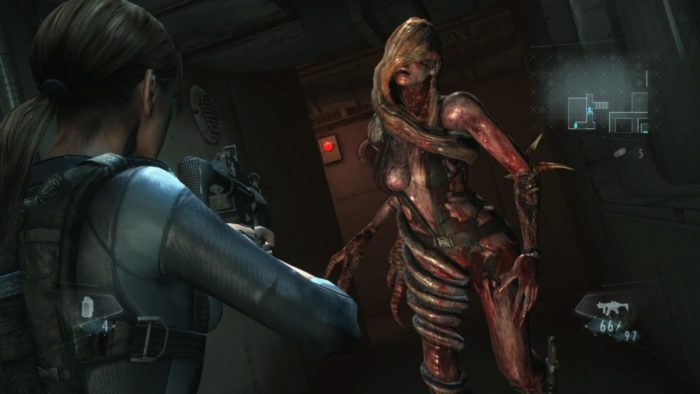
That Revelations fit on the 3DS is a technical marvel. The game’s primary setting—an abandoned cruise liner called Queen Zenobia—is as ornate, labyrinthine, and atmospheric as its older siblings. Revelations aimed to satiate horror fans who grew tired of the series’ action bent, and it delivers in terms of spooky exploration. Skulking around the ship as Jill Valentine feels like a natural (albeit streamlined) extension of the classics. The feeling doesn’t carry over to the other protagonists, unfortunately. During side and stories and flashbacks—of which there are many—Revelations devolves into a middling handheld shooter.
It’s also Resident Evil at its most misogynistic. No less than three women wear skintight, revealing outfits that nakedly cater to the male gaze. Newcomer Jessica Sherawat, who mercifully never shows up in another game, is the worst example. If her terrible dialogue wasn’t bad enough (“me and my sweet ass are on the way!” is among the series’ worst lines), take a look at the wetsuit she dons later in the game. Not very tactical, if you ask me.

The plot is nonsense and features some hysterically dumb twists, but it stumbles onto the series’ most credible political conflict: a U.S. agency secretly funding terrorist attacks to justify its existence and expand its influence. Their plan backfires, emboldening the terrorists and creating a worse threat than ever before. That’s barely fiction!
10. Resident Evil: Revelations 2
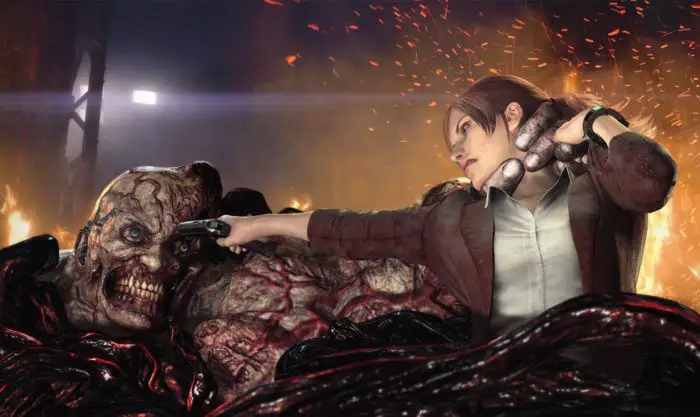
Revelations 2 is an odd duck. It finds itself next to its predecessor on this list, but they’re hardly the same type of game. Its dual-character system is intuitive and clever: if you’re playing alone, the more vulnerable character has to venture out for hidden items, lest the armed character run out of health and ammo. The monster roster—twisted and unholy—is a huge step up from the first Revelations. Its blend of horror and action is reminiscent of Resident Evil 4. By virtue of careful pacing and devious encounter design, Revelations 2 was the series’ scariest entry in over a decade. So why is it this far down the list?
The game’s cardinal sin concerns its endings. The method for achieving the good ending is obscure, counterintuitive, and badly implemented. Halfway through the story, at a moment the game fails to tell you is pivotal, the player has to ignore a QTE prompt (among other things) to set themselves on the right path. In co-op, one player gets the QTE while the other gets a much slower task, and they’ll lock in the bad ending if the player with the QTE finishes first—which is practically inevitable without prior knowledge. Many players didn’t even know there was a good ending until searching online. It’s a baffling design choice.
Revelations 2 has other problems: drab environments, poor excuses for puzzles, and a variable level of quality across its four episodes. None of them are dealbreakers. But it’s inexcusable to funnel players towards an unsatisfying ending without a clearer sense of direction.
9. Resident Evil

The one that started it all; the game that named the survival horror genre. Resident Evil introduces all of the series’ trademarks: haunting locales, plentiful puzzles, memorable monsters, a wide cast of characters, and a sci-fi/horror story loaded with B-movie cheese. The first game had it all.
The Spencer Mansion is a triumph of design. Every facet of its construction—art direction, enemy placement, locations of save rooms and item boxes—serves to loop you around the building at a perfect pace for discovery. It’s both unassailably mysterious and an invisible guide, pushing the player forward without ever holding their hand. And the game is as tight mechanically as it is aesthetically: the tank controls and fixed camera angles still don’t feel dated, as they’re essential to the game’s creeping, disempowered dread. 25 years later and it holds up beautifully.
Its flaws, however, were evident from the day of release. The writing and voice acting are infamously atrocious. Some claim this was intentional, but director Shinji Mikami has gone on record saying it wasn’t deliberate—rather, it was a confluence of bad translation and bad acting that Mikami recognized as a failure. Later games embraced the so-bad-it’s-good tone, but here, it’s just bad. Additionally, the puzzles are far too easy. They’re not logic problems so much as they’re tests of common sense. The remake upped the challenge by complexifying the puzzles—but we’ll get to that later.
8. Resident Evil Village
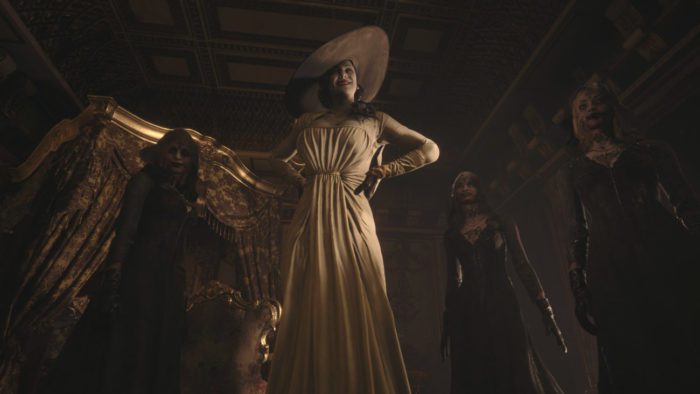
Just above the oldest game is the most recent. As many have noted, Village is an audacious blend of Resident Evil 7 and Resident Evil 4, rarely hitting the highs of its influences but merging them with aplomb. It’s also its own beast: the enemy roster includes lycans, vampires, talking dolls, and a wizard who can control metal. If it weren’t for the ever-present Chris Redfield, Village would come across as a spinoff. The franchise’s DNA is intact, though, even if it’s contorted into new forms. Combat is a constant balance of do or don’t, a sense of unease permeates every new location, and the story bends backward to tie into series lore. The latter isn’t a complaint; the connectedness of everything Resident Evil is part of the fun.
The meat of the game is divided into four sections—each with a distinct flavor of horror—linked in the center by the titular village. This structure lets Village experiment to great success, but it leaves the overall experience fragmented. It’s like a theme park: enjoy one roller coaster, walk to the next, start accelerating all over again. Mechanically, Village makes improvements on its numbered predecessor, but it doesn’t cohere as well. On the other hand, its everything-and-the-kitchen-sink approach lends it an eccentric zest. It’s an insane, maximalist thrill ride with memorable scares and some of the best lighting and shadow effects in the genre.
7. Resident Evil 3 Remake

The remake of Resident Evil 3 gets a lot of undeserved flak. Fans of the classics were disappointed by how heavily it departs from the original, but if you go in expecting a reimagining instead of a remake—or if you haven’t played the original—that’s not really an issue. Others bemoaned the game’s length compared to the Resident Evil 2 remake, but RE3 is more action-focused, and extending its length would feel like exhausting protraction. Taken on its own terms, the Resident Evil 3 remake is a vivid, exciting journey through hell. Raccoon City’s demise is gorgeous in the modern RE engine. The story’s given a thematic upheaval, transcending the original to tell a tale of man’s greed in the face of disaster. It’s not new subtext for the zombie genre, but it’s practically Shakespearean for Resident Evil.
The credible charge against the game involves Nemesis. In RE3 1999, Nemesis was the original stalker enemy, chasing after the player like an unstoppable curse. In the remake, however, most of the encounters with Nemesis are scripted, robbing the tyrant of its unpredictability. It’s not as scary when it’s chasing you around a cutscene and Jill’s doing the escaping for you. The new monsters that RE3 brings to the table are even more of a wash—one-hit-killers and bullet sponges. The new set pieces are good fun, though. They’re over just as they begin, but they’re taken to their full potential. This brief adventure packs a powerful punch.
6. Resident Evil 7: Biohazard
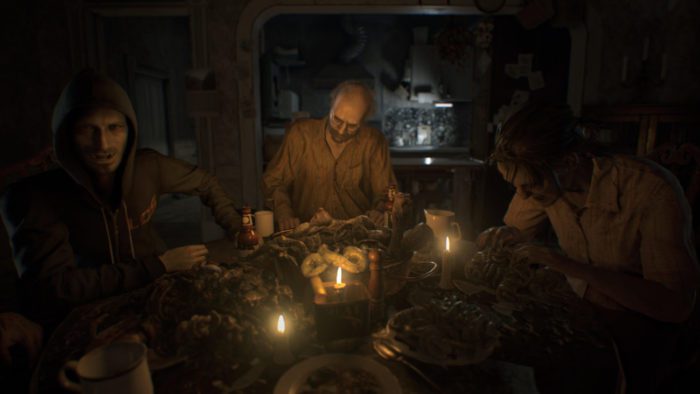
After Resident Evil 6 tarnished the series’ reputation, Resident Evil 7 stepped in to reinvent it—in first person. Like another entry that overhauled the player’s perspective to much acclaim (I wonder what that could be!), one of the most impressive things about RE7 is just how Resident Evil it feels from a brand-new point of view.
On the surface, RE7 looks like it’s aping the brand of horror that rose up to take RE’s mantle, particularly Outlast and Amnesia. But at its core, RE7 is a return to form—a recapitulation of what made Resident Evil special in 1996. Hell, it actually takes place in a residence. Survival is the name of the game as Ethan skulks, crawls, and shimmies around a house that could overpower him in a second. The head-scratching puzzles, the carefully scattered resources, the unsettling movements of the zombies (now with 100% more mold)—this is pure Resident Evil.
Aesthetically, the game is the bastard child of Resident Evil and The Texas Chain Saw Massacre. The antagonistic Baker family is brought to life—or, uh, undeath—with incredible vocal performances. Their hostility bleeds into the musty, rotten art style to form a uniquely oppressive atmosphere. The vibe is diluted somewhat during the final hours, which veer into Resident Evil clichés and horror clichés alike, but the game leaves a strong impression overall. Its only other misgivings are the miserably designed boss battles. Otherwise, the game’s a winner. RE7 is a contender for the scariest game in the series, and if played in VR, it handily takes the crown.
5. Resident Evil 2

Resident Evil 2 took the foundation the first game laid and built a palace on top of it. It has more monsters, more combat, and much bigger set pieces. The transition to action started here, not with Resident Evil 4. This change has long angered horror purists, but RE2 makes it work wonders without losing the prequel’s distinctive dread. Mechanical tweaks help the experience go down smoother too. The only thing Resident Evil does better than its sequel is the Spencer Mansion, which is laid out a bit more thoughtfully than the circuitous RPD.
RE2 builds extremely well. At the outset, the hordes of zombies are more overwhelming than anything the original threw at you; by the climax, the game is downright empowering. With faster, deadlier, and more numerous monsters, the player’s placement of the character—who cannot move while shooting—is tactically vital. Mastering the staccato dance of the combat feels terrific as the stakes rise. The story builds as well as the action: embracing the cheese that the original tripped into, RE2 goes for broke with iconic characters, ludicrous monsters, and a plot straight out of 80s sci-fi.
The game’s only persistent fault is its difficulty—or lack thereof. Even at its hardest, there are so many resources available that survival is never a trial. The puzzles, already too easy in the original, are a complete joke here. But everything else is in top form. RE2 is an influential title for a reason.
4. Resident Evil 3: Nemesis
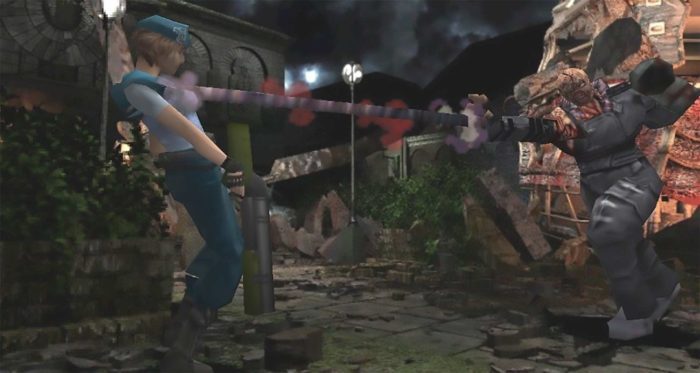
Another underrated Resident Evil 3. Liars will tell you that Nemesis is the weakest of the original trilogy, but those people should be summarily infected with the T-virus. Coming hot off the heels of RE2, Nemesis caught flak for its shorter length and reused assets—complaints that were levied against its remake as well—but once again, these complaints miss the point. RE3 is an immaculate blend of horror and action that its predecessors could never quite achieve. Like the first Resident Evil, Nemesis excels at using space and silence to generate unease, but it ups the horror quotient with the titular tyrant. Unlike RE2’s Mr. X, who’d stop chasing you the second you walked through a door, Nemesis tracks the player throughout the map. Every confrontation with it is harrowing.
Like Resident Evil 2, Nemesis excels at dramatic set pieces and tactical combat setups. It introduces environmental hazards and a specific button for aiming at them, giving the player more options for fighting the undead. The game’s plot isn’t as expansive as its predecessor’s, but it offers a few “A or B” choices that take the story in different directions and encourage replays. Other new additions, like a dodging ability and an ammo crafting system, reward careful playstyles considerably. Nemesis may not be an evolution of the previous two games, but it’s undeniably a refinement. RE3 is the pinnacle of the PS1 fixed-camera era. And best of all, it excels in an area where both its predecessors fell short: the puzzles are legitimately puzzling!
3. Resident Evil 4

Resident Evil 4 is often heralded as the best of the franchise. It’s certainly one of the most influential: leaving behind the fixed cameras of yore, RE4 pioneered the over-the-shoulder perspective that’s ubiquitous to shooters today. Between the perspective shift, Leon’s transformation into an action hero, and the relatively standalone story, the game ran the risk of alienating fans—and it did for some, inevitably—but it’s still Resident Evil, through and through. It’s a marvelous evolution of the series that holds tightly to its roots.
It’s also one of the best-paced action games of all time: at no point in RE4’s 15-hour campaign does it feel like it’s running out of steam. The game is essentially a set-piece machine, but each segment has a palpable degree of effort baked into it. It’s breathlessly inventive. In the 16 years since its release, it’s arguably never been topped as the quintessential third-person shooter.
Is it the quintessential survival horror? No. The game is more of a thrill ride than a horror experience. But that’s nothing to hold against it—for what it is, it’s nearly perfect. Only a couple missteps hold it back from masterpiece status. When the infected start wielding firearms near the end, the combat encounters can get a little bit samey. More troubling, though, is the weird sexualizing of the president’s daughter, who you’re tasked with protecting throughout the game. At least Capcom realized the error of their ways: they removed every moment of objectification from the recent VR release. Good on you, Capcom.
2. Resident Evil Remake
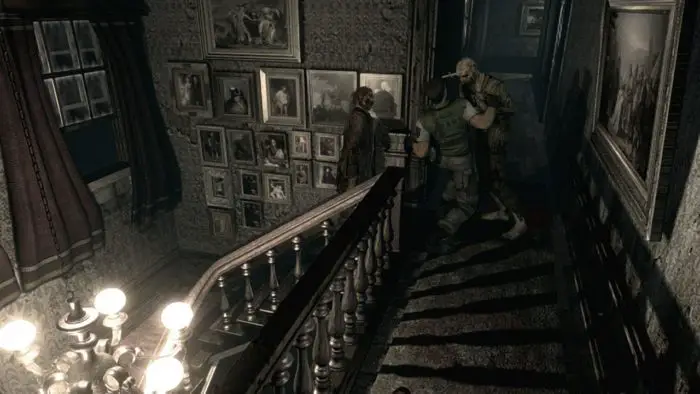
The remake of the first game is the series’ first masterpiece. The puzzles are tougher, the Spencer Mansion is bigger, the camera angles are more redolent of tragedy, and the story is expanded to flesh out the mood. Everything Resident Evil does, its remake does exponentially better. And for all its augmentations, it’s stays faithful to the original: it’s not a different version of the original so much as it’s the original fully realized. Sometimes the game leans into its faithfulness, recreating locales with the utmost detail. Other times, it subverts the original, messing with the expectations of players who remember old setups. Either way, it demonstrates complete mastery of the source material.
The pre-rendered backgrounds are just gorgeous. The remake has better art design than a bevy of next-gen titles. When it comes to atmosphere, this game is peerless. It’s no slouch in the gameplay department either: exploring the mansion is more captivating (and disconcerting) than ever, and the new type of zombies—Crimson Heads, which come back stronger after you’ve killed them—ensure that you’re on your toes when retreading old ground. Just make sure to play with the original tank controls, as the optional modern controls don’t fit the game’s pace and structure whatsoever.
The Resident Evil remake is the original game with its flaws erased, its strengths fortified, and its innovations perfected. It’s the definitive version of Resident Evil. Whether it or the #1 spot on this list is the best game in the franchise is really a matter of preference.
1. Resident Evil 2 Remake
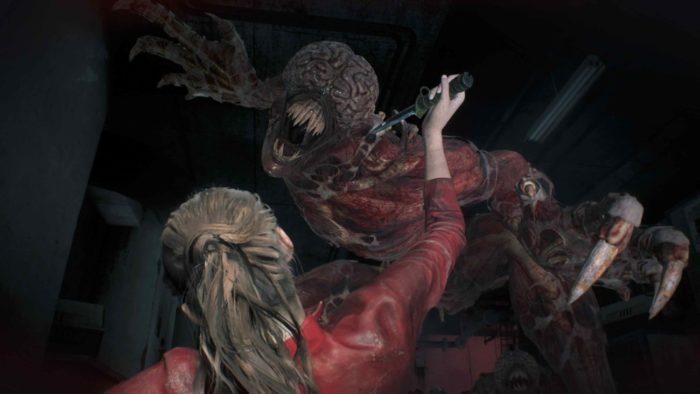
Where the remake of the first Resident Evil perfects an old formula, the remake of the second formulates a new concoction. This version reimagines the game from an over-the-shoulder perspective. The results are phenomenal. It’s not a strict adaptation like the Resident Evil remake, but its accomplishments are similar—this is Resident Evil 2 in peak form. Seeing the RPD rendered in the RE engine is as grand as it is nostalgic. RE2’s flaws, such as lack of difficulty and weak puzzles, are made up for in spades. Mr. X is a real-deal stalker now, thundering after the player with more speed and smarts than any stalker in the series. Completely new locations are added where there was once repetition. The narrative gets the A-movie treatment, resulting in some genuinely emotional moments. Resident Evil has never been this gripping.
The allure is in the details. This game is programmed to the nines. Zombies, the most common monster in the franchise, are designed with consummate care. They lurch, twitch, and stagger in ways that are disturbing and mechanically unpredictable. The game’s sound design is possibly its most impressive feature. Standing still, you can tell exactly where in the police station an enemy is by the echo of its footsteps. The soundscape is so intricate that listening closely becomes a primary means of survival.
For that reason and more, it has my vote for the scariest game in the franchise. The staples are all accounted for: an unstoppable stalker; terrifying jump scares; and the nervous, pervasive fear of running out of resources. When it’s all happening at the same time, it’s a beautiful, horrible concert of horror. The RE2 remake isn’t just the best in the franchise—it’s a contender for the best survival horror game ever made.
Time to dive in!
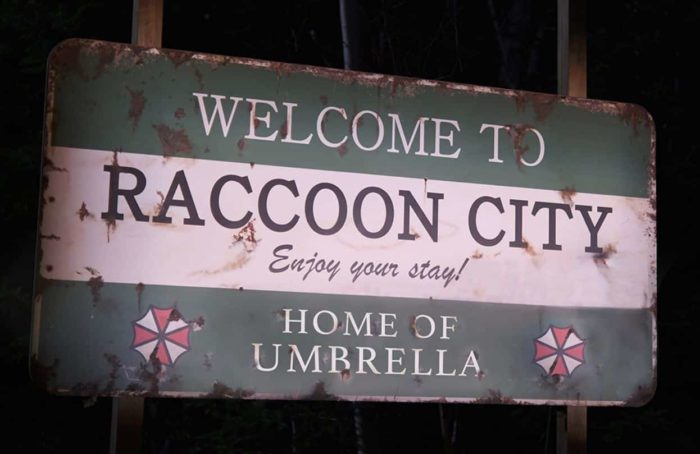
If you want to prepare for Welcome to Raccoon City by playing the games it’s based on, you’re in luck: it’s adapted from the remakes of the first two games, some of the finest horror games of all time. Turn off the lights, turn up the volume, and get ready to enter the world of survival horror.
Looking for more on the Resident Evil franchise? We’ve got you:
“Resident Evil: Welcome to Raccoon City Has Great Horror but Little Else”



